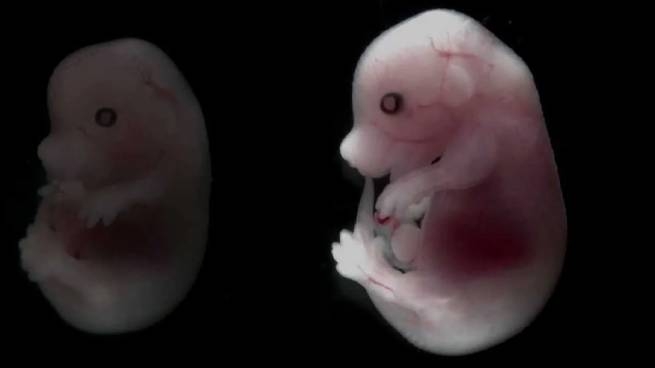Scientists conducted research with monkey stem cells, and for the first time they managed to grow artificial embryos from them.
Biologists created them not from sperm and eggs, but from stem cells. The embryos were then placed in the uterus of adult animals, and some of the monkeys showed signs of pregnancy, writes a magazine Massachusetts Institute of Technology MIT Technology Review.
The study team at the Chinese Academy of Sciences in Shanghai used macaque embryonic stem cells that had been grown in laboratories for generations. They, the researchers say, can turn into virtually any type of body cell, including those that make up the organs, blood, and nervous system.
The resulting clumps of cells are called blastoids because they look like early embryos called blastocysts. After growing in vitro for seven days, the researchers subjected them to a series of tests to see how similar they were to typical embryos. More than 6,000 individual cells were analyzed. Tests revealed a close resemblance between stem cell-derived embryos and normal monkey embryos.
However, scientists not involved in the study have already stated that more evidence is needed for the degree of similarity of blastoids and embryos. The only way to find out was to test whether the resulting cell clumps could develop in the uterus of a monkey. To do this, the scientists placed seven-day-old blastoids in the wombs of eight adult monkeys. Within three weeks, in three of these animals, the blastoids had successfully implanted into the uterus and formed a yolk sac*—one of the earliest signs of pregnancy. The monkeys also had elevated hormone levels, meaning they would have had a positive pregnancy test.
However, within 20 days of the transfer, the monkey blastoids stopped developing, indicating that they are still not perfect copies of normal embryos. There is also a possibility that scientists could have made more progress if the experiment had been carried out on more monkeys. But such large-scale experiments would probably not be considered ethical.
However, to date, this is the greatest achievement of scientists in the process of growing embryos in primates in the laboratory. If further work is successful, the researchers hope, one day it will be possible to produce embryos in this way.
Stem cell blastoids continue to provide a good model for learning more about human embryos and their early development. Generally, scientists are not allowed to study human embryos in the lab 14 days after fertilization. And recently published international guidelines emphasize that human blastoids should never be implanted in humans or any other animal.
Working with primates can become an alternative in the process of researching human pregnancy – the causes of miscarriages, the inability to conceive a child. In the future, drugs can be tested on blastoids to find ways to improve IVF.
Although developments in this area are active and very fast, the researchers do not think that in the near future anyone will receive a monkey from a blastoid that has developed from stem cells.
*The yolk sac is a sac-like structure that is responsible for transporting nutrients to the embryo during pregnancy.







More Stories
Belarus is ready to fight, having adopted a new doctrine
IMF: "Huge US debt poses serious risk to global economy"
Teenager arrested in Paris: he wanted to “die as a martyr” at the Olympic Games (video)